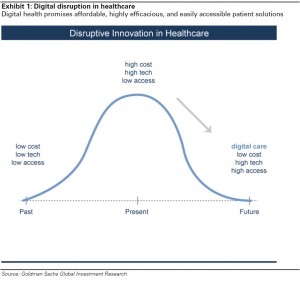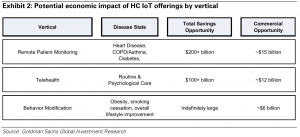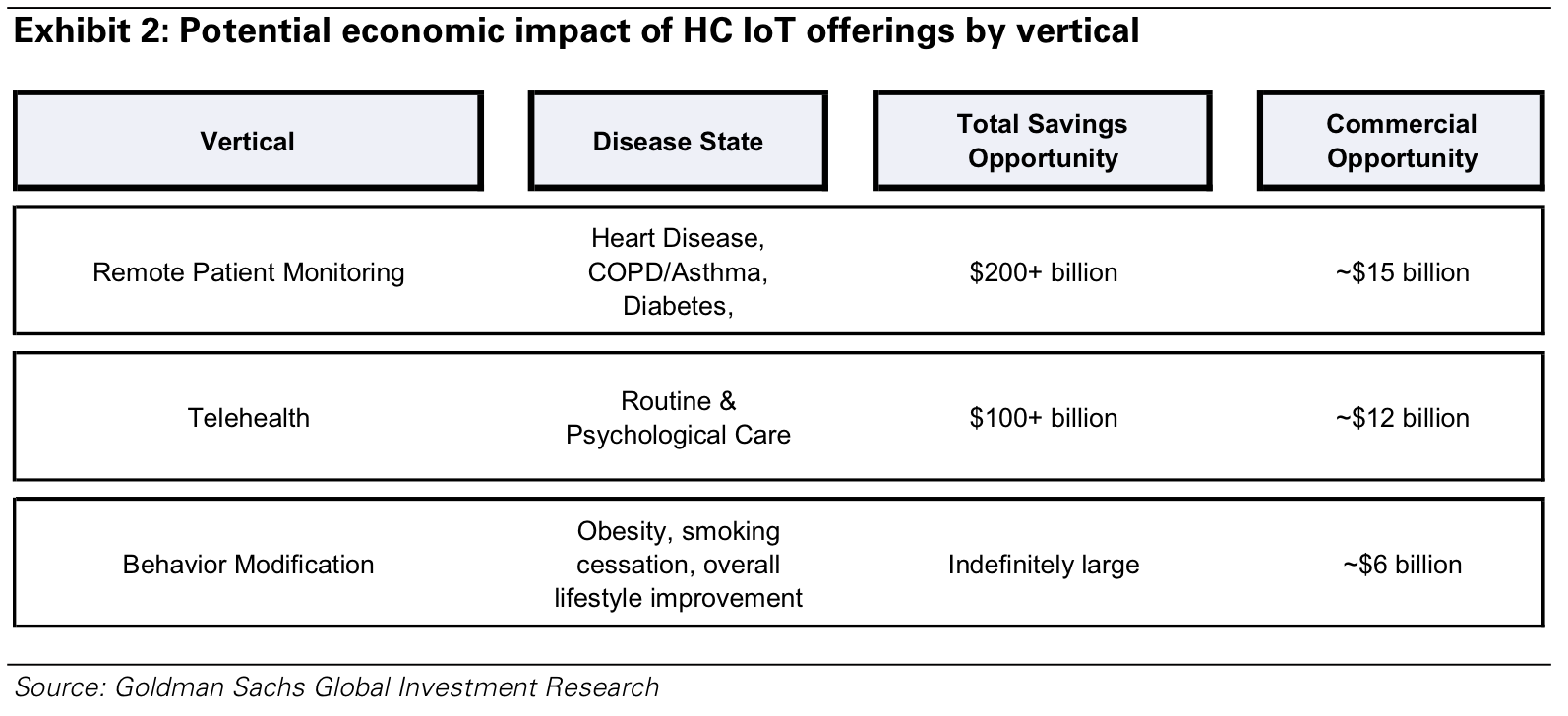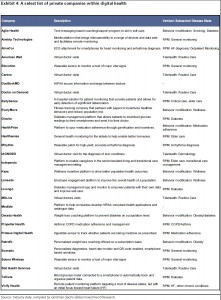 In this week’s posts on Health Populi, we’re diving into three big reports focused on digital health and the Internet of Things (IoT) in healthcare: from the McKinsey Global Institute, Goldman Sachs, and Accenture. In this post, we dig into Goldman Sachs’ analysis, The Digital Revolution comes to US Healthcare, the investment firm’s fifth volume in their Internet of Things report series.
In this week’s posts on Health Populi, we’re diving into three big reports focused on digital health and the Internet of Things (IoT) in healthcare: from the McKinsey Global Institute, Goldman Sachs, and Accenture. In this post, we dig into Goldman Sachs’ analysis, The Digital Revolution comes to US Healthcare, the investment firm’s fifth volume in their Internet of Things report series.
Goldman Sachs’ definition of the Healthcare IoT is, “a device that is connected via the Internet and informs clinical decision making,” which bridges digital and physical worlds “to change physician and patient behavior.” The firm identifies three IoT healthcare segments: remote patient monitoring (RPM), telehealth, and behavior modification.
 Given this definition and market segments, Goldman Sachs calculates a market of $32.4 billion of revenue, with nearly one-half coming from remote patient monitoring, 37% from telehealth, and 18% from behavior mod, as shown in the second chart.
Given this definition and market segments, Goldman Sachs calculates a market of $32.4 billion of revenue, with nearly one-half coming from remote patient monitoring, 37% from telehealth, and 18% from behavior mod, as shown in the second chart.
Goldman Sachs has also calculated potential savings that could accrue through adopting IoT in these three areas, to the tune of $305 billion, two-thirds of which come from chronic disease management. The $305 bn amounts to about 10% of total healthcare spending in the US (= $3 trillion in 2013 — a significant cost-curve bending opportunity.
There is an abundance of companies serving the three verticals Goldman Sachs identifies as the low-hanging fruit for IoT in healthcare, some of which are shown in the third exhibit. GS notes that the current operating environment for adopting many of these technologies is still nascent, but believes the table is set for US healthcare providers and patients to adopt new healthtech given the migration to value-based payment. Some companies on the list have already gained market traction and maturity, such as American Well in telehealth; Propeller Health in patient’s personal health engagement and disease management (for lung conditions like asthma and COPD); and, Limeade, which has served the employer market for wellness and health management for several years.
Changing patterns of healthcare delivery present opportunities and threats to incumbents in the healthcare ecosystem: for hospitals, declining volumes demand greater efficiencies. For payors, lower revenues require population health management. For pharmaceuticals, medical devices, and diagnostics, risks of lower volumes mean the search for new revenue sources and value around the pill, the device, and the diagnostic test.
Health Populi’s Hot Points: Both healthcare providers and patients have more financial skin in the game going forward: for providers, it’s going at-risk for payment to manage patients’ chronic conditions and cohorts of patients for population health management. For patients, the new payment regime requiring more “skin” are greater up-front costs for high-deductibles, and funding health savings accounts to help manage the financial sting of greater out-of-pocket spending until those deductibles are met.
A shift to more virtual care, via telehealth and remote patient monitoring, will bolster disease management and self-care for patients at home and on-the-go via mobile tech and sensor-enabled technology in the IoT era. Goldman Sachs calls out the overall benefit that remote patient monitoring offers clinicians and providers to scale expertise across more patients outside of the bricks-and-mortar setting of Pill Hill and ERs. Hospitals’ opportunity is to reinvent themselves, morphing from centralized institutions to hub & spoke models, to the decentralized patient-centered medical home enabled through IoT where patients/people live, work, play, and learn.
I’ve written and spoken here on Health Populi, in my Huffington Post piece Your Home is Your DIY Medical Home, and elsewhere that the person’s/patient’s home is becoming the true medical home, for greater self-care and remotely-provided healthcare. In this post, I discussed the connected home as the new hub for health care based on research from Accenture. Tomorrow, I’ll cover Accenture’s latest report, The Era of Living Services, resulting in digital “everything” and “liquid expectations” on the part of consumers. IoT and Big Data underpin this vision, and privacy and ethics will require transparency especially from health ecosystem actors. Click on Health Populi on Friday, 10th July, to read more about these inevitable thorny issues that emerge from the IoT in healthcare.






 Thank you FeedSpot for
Thank you FeedSpot for